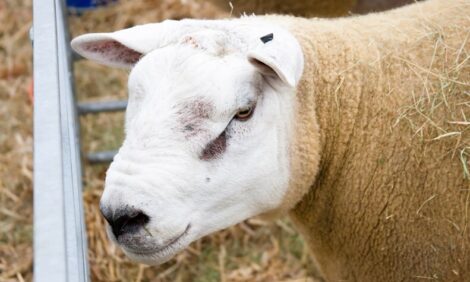



New report: drivers of US dairy productivity & efficiency
The U.S. dairy sector has undergone substantial structural change characterized by a shift to larger and fewer dairy operations, concentrated in relatively few States, according to a new report authored by Eric Njuki with USDA's Economic Research Service.Global demand for milk and dairy products continues to rise, fueled by rapid population growth, rising household incomes, and favorable consumption patterns. Meanwhile, the United States plays a key role in world dairy markets having generated 11.6 percent of global milk output and 14 percent of global dairy exports in 2019 (UN FAO, 2020).
Milk production for the domestic market continues to increase steadily. However, the net returns of production have consistently declined over the years because of production’s rising costs, resulting in depressed profit margins for farmers. Furthermore, the national trend has been towards consolidation of dairy operations into larger and fewer farms.
The majority of milk production in the United States is now concentrated in relatively few States located in the West, Southwest, Upper Midwest, and the Northeast regions. Despite continued growth in milk production, long-term climate trends and weather volatility may threaten this growth trajectory.
This study builds upon previous USDA, Economic Research Service reports that focused on structural change and consolidation in the dairy sector by analyzing productivity growth, its sources, and current trends. In doing so, new insights are generated on critical questions, such as:
- whether there are productivity gains in the dairy sector
- how widespread these productivity gains/losses are across the sector
- sources of productivity gains/losses
- how environmental effects, that is temperature and precipitation, affect dairy productivity
- the role of technological progress in productivity
- how organic dairy farming performs within the sector
In sum, this study seeks to understand the state of dairy production in the United States, by measuring and analyzing the dairy sector’s productivity growth and efficiency and identifies proximate drivers and sources of this growth in the face of the structural change observed from 2000 to 2020.
The study applied a model of productivity on dairy farms to generate measures of total factor productivity (TFP) to provide estimates of proximate drivers and components of TFP growth, including scale efficiency, technical efficiency, technological progress, and environmental components. In addition, the report compared and analyzed a single-factor productivity measure—milk output per cow (also referred to as milk yields).
What Did the Study Find?
- From 2000 to 2020, milk output per cow increased at an annual rate of 1.53 percent nationally, with significant variations across States.
- From 2000 to 2016, total factor productivity (TFP) growth increased at an annual rate of 2.51 percent, albeit with variations across States. across herd-size class and across production type.
- Technological progress was the primary driver behind TFP growth—growth associated with the discovery of new systems, processes, and methods of turning inputs into outputs. Examples include improved genetics, selective breeding, enhanced feed formulations, and advanced digital record keeping.
- The pace of TFP growth was slowed by substantial declines in the rate of growth of scale-and-mix efficiency— a measure of the benefits obtained by changing the scale of operations and technical efficiency— which is a measure of how successful operators are at attaining their full potential.
- Environmental effects caused by weather variability and anomalies had a negative impact on the overall welfare of cows or cow comfort.
- Western and southwestern states—Idaho, New Mexico, Arizona, and California—experienced the fastest productivity growth with annual rates between 3.52 and 4.40 percent.
- Southern states—Kentucky, Georgia, Missouri, and Tennessee—were the slowest growing with annual rates ranging between 0.89 and 1.74 percent.
- Productivity across the largest herd-size class with more than 1,000 milk cows grew at an annual rate of 2.99 percent while the smallest herd-size class with fewer than 100 milk cows grew at an annual rate of 0.63 percent.
- The average total factor productivity growth between 2000-2016 for organic dairy operations was 0.66 percent compared with conventional dairy operations, which grew at an annual rate of 2.51 percent.
To view the full report, click here.
TheCattleSite News Desk


